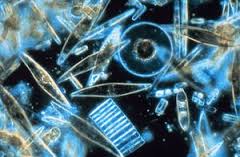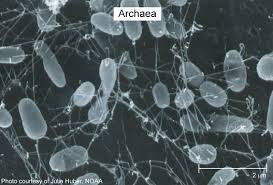Overview
Plankton include many organisms that live on near the surface of water, and float with the currents. There are types of freshwater plankton that live in lakes, while saltwater plankton live in oceans and saltwater lakes. They are at the bottom of the food chain, and are a rich source of nutrients for many forms of marine life, including baleen whales.
Definition
Plankton drift with the current, because they cannot swim against it. Most are single-celled, and include bacteria, algae, protists, plants, and animals. Some organisms live their entire lives as plankton, while others develop from a planktonic state to a nektonic state, and swim away.
Phytoplankton
Phytoplankton produce energy by photosynthesis, so they require light to live. One of the most important groups of phytoplankton are the diatoms, which are single-celled organisms with beautiful cell walls that are made of silicon. They shine and sparkle like many-faceted glass, because glass is also made of silicon. Different forms of algae and other one-celled plants are also part of this group of energy producers or autotrophs.
Zooplankton
Zooplankton do not produce energy, but consume phytoplankton, other zooplankton, and other nutrients. They are heterotrophs. This group includes many different types of larvae, which feed on plankton from the moment they are hatched, as well as other types of dinoflagellates that do not produce their own energy by photosynthesis. Some organisms produce their own energy sometimes, but feed on other plankton at other times, or mixotrophs.
Bacterioplankton
Bacterioplankton are the scavengers of the plankton world. They recycle nutrients, and provide important mineral groups in the process. Some of the types of plankton in this group are the smallest forms of life: the bacteria, marine viruses, and archaea. The archaea are single-celled organisms that do not have a nucleus but have different types of cell walls than other types of single-celled organisms. Some are attracted to sunlight, but they do not produce their own food by photosynthesis; others use carbon and other minerals; and still others use inorganic compounds. They appear to be a separate species from either bacteria or eukaryotes, cells that contain distinct nuclei.
Interested in biology tutoring services? Learn more about how we are assisting thousands of students each academic year.
SchoolTutoring Academy is the premier educational services company for K-12 and college students. We offer tutoring programs for students in K-12, AP classes, and college. To learn more about how we help parents and students in Littleton, CO: visit: Tutoring in Littleton, CO




